Physical Address
304 North Cardinal St.
Dorchester Center, MA 02124
The nervous system provides rapid and precise communication between different parts of the body via the action of specialised nerve cells called neurones . These highly specialised cells are interconnected and function to gather and process information and then generate appropriate response signals. The nervous system is divided into two main parts:
The central nervous system (CNS) comprising the brain and spinal cord
The peripheral nervous system (PNS) comprising the nerves which run between the CNS and other tissues, together with nerve ‘relay stations’ termed ganglia
Histologically, the entire nervous system merely consists of variations in the arrangement of neurones and their supporting tissues. Functionally, the nervous system can be divided into the somatic nervous system , which is involved in voluntary functions, and the autonomic nervous system which exerts control over many involuntary functions. The autonomic system can be further divided into sympathetic and parasympathetic systems .
The functions of the nervous system depend on a fundamental property of neurones called excitability . As in all cells, the resting neurone maintains an ionic gradient across its plasma membrane, thereby creating an electrical potential. Excitability involves transiently changing the membrane permeability in response to appropriate stimuli so that the ionic gradient is partially reversed and the plasma membrane loses its electrical potential (i.e. becomes depolarised ). Depolarisation itself simulates adjacent plasma membrane to depolarise, causing a wave of depolarisation called an action potential to spread along the plasma membrane. This is followed by rapid repolarisation in which the membrane re-establishes its resting potential.
At sites of intercommunication between neurones called synapses , transfer of the action potential (the message) is via chemicals. Depolarisation of the neurone causes the release of chemical transmitter substances, neurotransmitters , which stimulate receptors in the adjacent neurone, modulating the potential for or triggering an action potential. Neurones are arranged in pathways, often with many interconnecting neurones, for the conduction of action potentials from receptors to effector (acting) organs. Neurotransmitters serve not only to mediate neurone-to-neurone transmission but also act as chemical signals from neurones to receptors on the effector organs which also exhibit excitability.
The effector organs of the voluntary somatic pathways are generally skeletal muscle causing movement, while those of involuntary pathways are usually smooth muscle, cardiac muscle and muscle-like epithelial cells (myoepithelial cells) within exocrine glands.
This chapter encompasses nerve cells and their supporting cells, focused on the histological structure of the peripheral nervous system and simple types of sensory receptors. Details of the supporting cells and arrangement of nervous tissue in the central nervous system are the subject of Ch. 20 , while the structure of the highly specialised organs of sensory reception, eyes and ears, is presented in Ch. 21 .
Infections of the CNS are caused by bacterial, viral or fungal organisms and result in inflammation of the brain. Infection can affect the meninges (meningitis), the spinal cord (myelitis) or the brain substance (encephalitis) and can be life threatening. Infection occurs most commonly as a result of haematogenous spread (spread from the blood stream).
The regulation of neuronal excitability within the brain may become abnormal, leading to an uncontrolled spread of depolarisation, termed an epileptic seizure.
These are a group of diseases mainly seen in old age and characterised by progressive degeneration and death of nerve cells, often limited to specific neuronal systems; Alzheimer’s disease , motor neurone disease and Parkinson’s disease fall in this group.
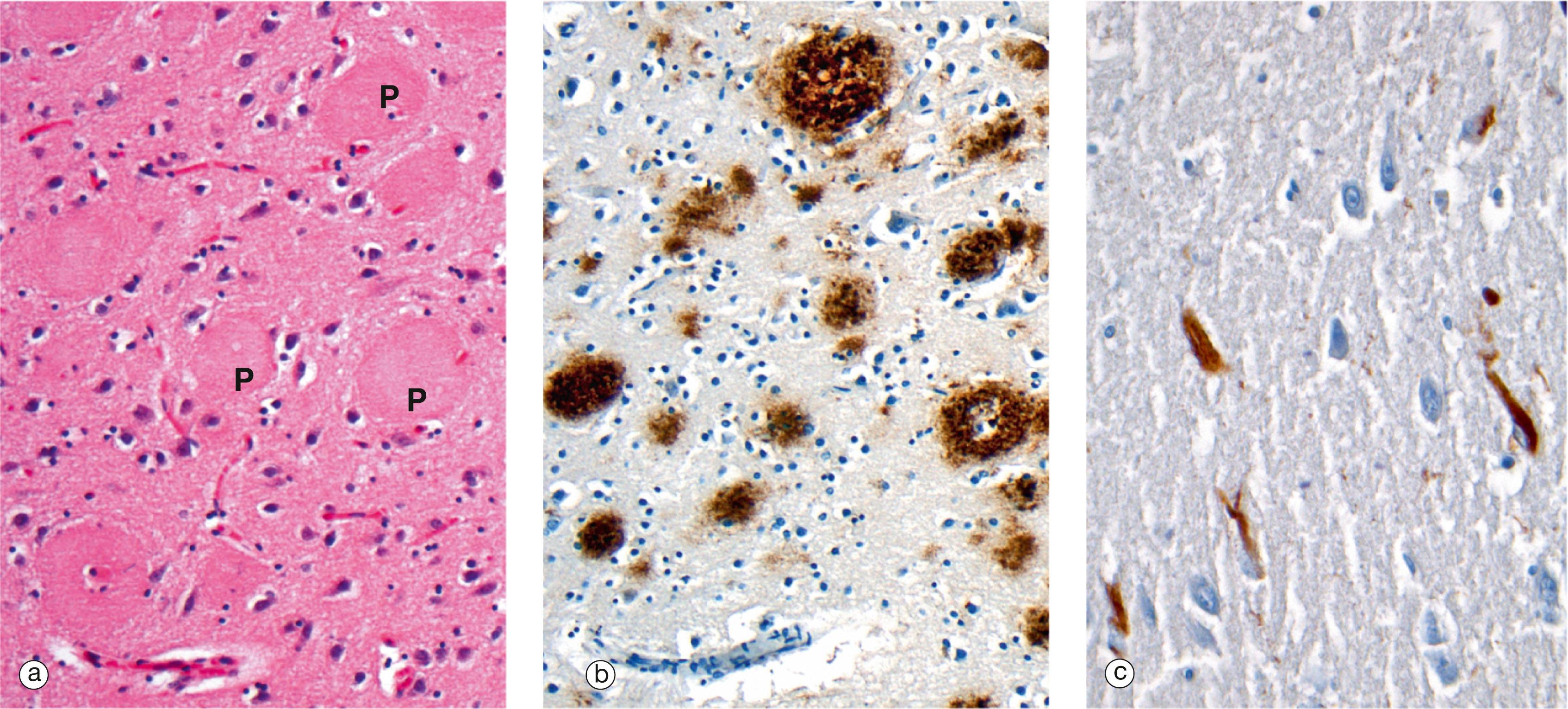
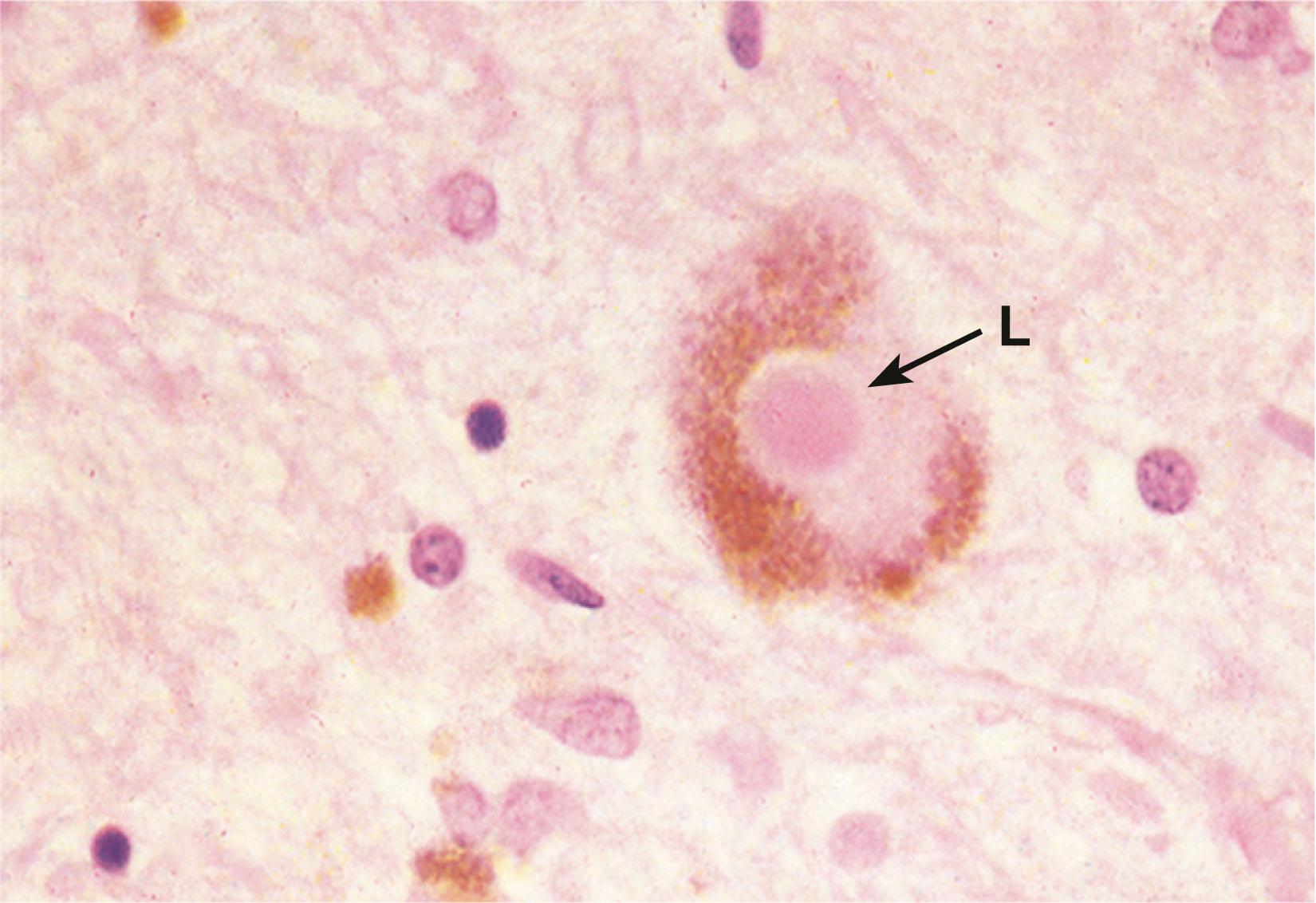
The transmission of signals in the nervous system is largely by way of long nerve cell processes which are insulated by cells making a substance called myelin . These specialised myelin-forming cells (Schwann cells) can be the target of specific diseases, leading to loss of function of effective signalling between nerve cells. Multiple sclerosis is the main disease in this group .
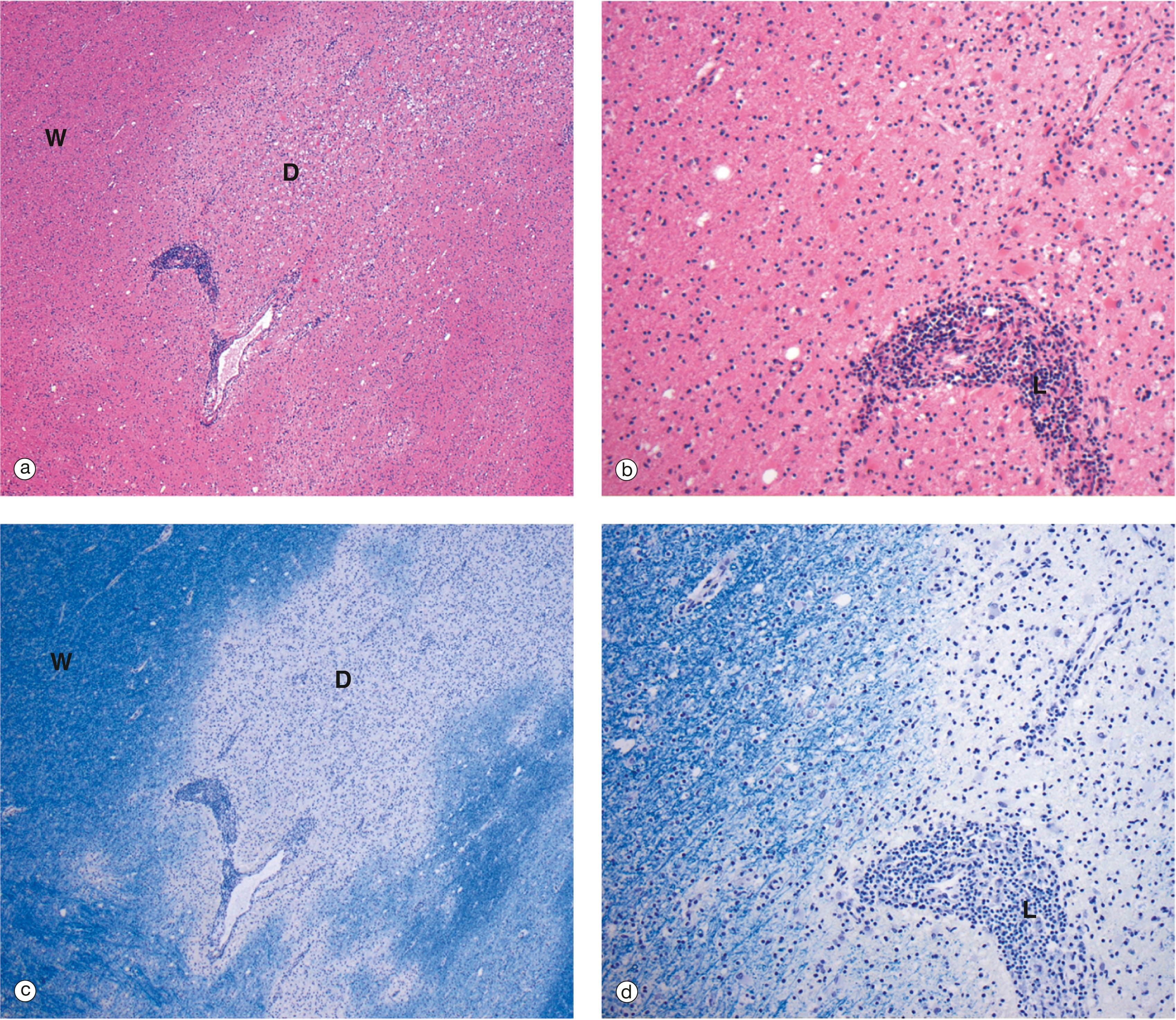
The vascular supply to the brain is vital in maintaining its function. Cerebral infarction (stroke) is one of the major causes of morbidity and death in affluent societies . The majority of strokes are due to cerebral artery atheroma, thrombosis or embolism resulting in irreversible ischaemic damage to neurones. Haemorrhagic stroke can also occur as a result of bleeding of small intracerebral vessels or reperfusion following reversal of a blockage (thrombosis).
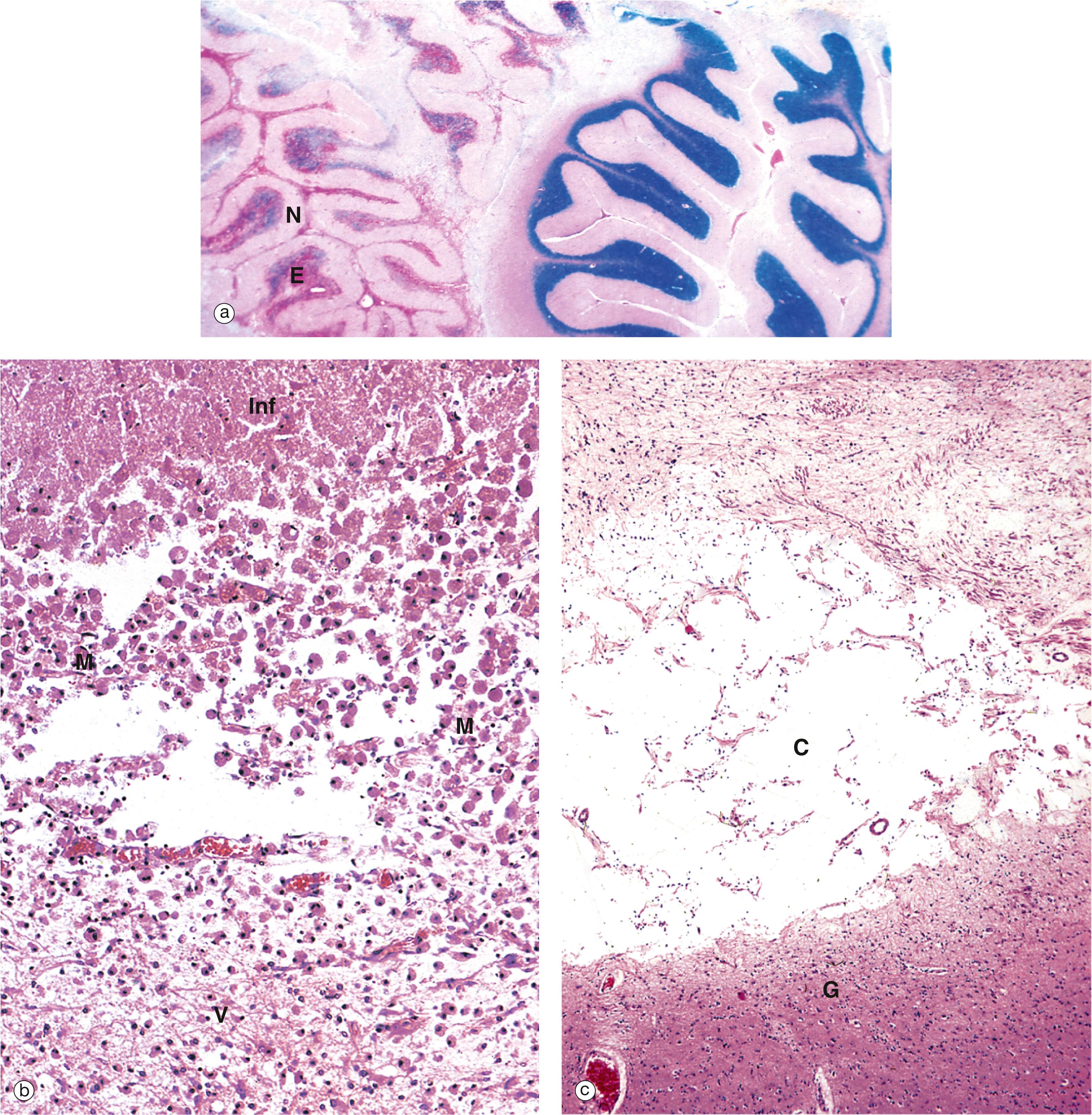
This can occur as a result of bleeding within the brain itself (intracerebral haemorrhage) or from vessels outside the brain (subarachnoid, extradural or subdural haemorrhage). Often this is due to the effects of trauma or, in subarachnoid haemorrhage, is due to rupture of a cerebral artery aneurysm (a weakness in the vessel wall causing a bulge which may rupture).
Neurones are derived in embryogenesis from primitive neuroblasts . Neurones are terminally differentiated cells that, for all practical purposes, do not regenerate in the event of cell death. Studies have shown cell division in neurones in the adult brain, although the biological significance of this remains uncertain. However, regeneration of axons and dendrites can occur in the event of damage, provided the neurone cell body remains viable. This is the basis of nerve grafting used to treat peripheral nerve injuries.
The cytoskeleton of neurones is highly organised.
Neurofilaments, the intermediate filaments of nerve cells, act as a scaffold to maintain the shape of the axon and cell body.
There is a highly organised network of microtubules which transport material up and down the axon. Slow axonal transport carries cytoskeletal elements.
Fast axonal transport carries membrane-bound organelles, such as neurosecretory vesicles, at speeds of 400 mm/day and is mediated by microtubular transport mechanisms. Anterograde movement (from the cell body) uses the molecule kinesin as a molecular motor, while retrograde movement (to the cell body) uses the molecule dynein .
G Golgi apparatus L lysosome M mitochondrion MB multivesicular body N nucleus PM plasma membrane R free ribosomes rER rough endoplasmic reticulum S synapse T microtubules TB terminal bouton
Neurones are less robust than other cells in the CNS such as astrocytes or microglia. As a result, they are vulnerable to environmental changes such as hypoxia. This is known as selective vulnerability and leads to neuronal injury and death. Healing in the brain following injury occurs as a result of gliosis as the usual granulation tissue and fibrous scarring that occurs in other tissues in the body is uncommon in the CNS .
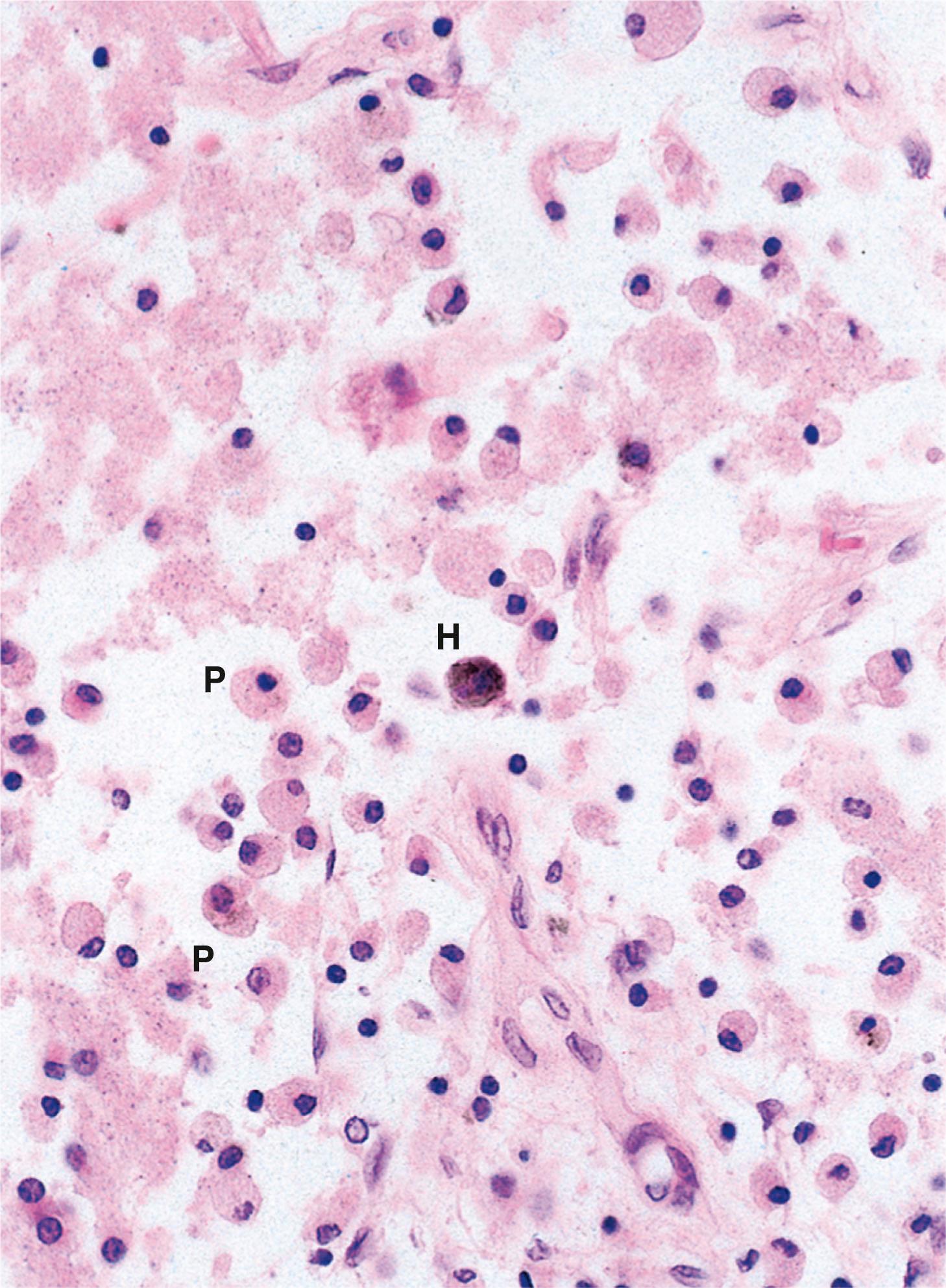
Become a Clinical Tree membership for Full access and enjoy Unlimited articles
If you are a member. Log in here